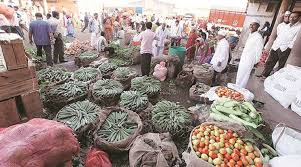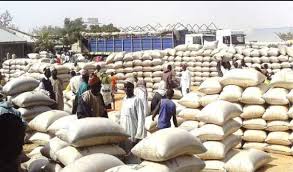The Nigerian Marketing Boards originated directly from the West African Marketing Boards, which themselves originated from the wartime Produce Control Boards set up by the colonial administration.
The Produce Control Boards were established to organize the local purchase of the principal agricultural export crops for overseas sales in African territories.
The first Nigerian Marketing Boards were commodity boards, and in this regard, the Cocoa Board was the first to be established, later followed by the Palm Produce Board, the Groundnut Board, and others.
Following the regionalization of the country in 1954, Regional Marketing Boards were created. By 1962, there were eight Regional Marketing Boards, which included the Nigerian Produce Marketing Company (NPMC). A further reorganization of the Marketing Boards gave rise to the creation of seven different boards.
They were the Cotton Board, Grains Board, Cocoa Board, Palm Produce Board, Groundnut Board, Rubber Board, and Root and Tuber Board. Some of these boards were responsible for the marketing of other crops in addition to their main crop.
For example, the Cocoa Board was also in charge of coffee, the Cotton Board was in charge of kenaf, and the Groundnut Board was also in charge of soya bean.
Read Also: Wild Dog Description, their Personality and Care Guide
Objectives of the Marketing Boards in Agriculture

The main objectives of the Marketing Boards were as follows:
i. To secure the most favorable arrangements for the purchase of produce and arrange for the export of agricultural products.
ii. To promote the development and rehabilitation of producing areas.
iii. To help maintain legally prescribed grades and standards of quality of export produce.
iv. To allocate funds to the appropriate authorities by means of grants, loans, investments, and other means for the purpose of economic development and research. This function was discontinued in 1976.
v. To supply produce to local processors for processing in their plants.
vi. To stabilize producer prices by fixing legal minimum buying prices for a whole season at a time to minimize price fluctuations within and between seasons.
Operations of the Marketing Boards in Agriculture
The prices of the scheduled commodities were fixed by the Federal Government on the advice of the Committee on Producer Prices. The fixed price, which would be announced well in advance of the farming season, would reign throughout the season irrespective of the level of the world market price. The various boards purchased commodities through the Licensed Buying Agents (LBAs), who could be individuals, firms, or cooperatives. The boards paid commission to the LBAs as well as fixed transport differentials.
The Marketing Boards played notable roles in the economic development of Nigeria. Their roles included the following:
i. Stabilization of producer prices within and between seasons: This was achieved by fixing producer prices well in advance of the production season and announcing them at the beginning of each season to reduce inter-seasonal price fluctuations.
ii. Establishment of an efficient organization for the purchase of produce: This was done through the appointment of Licensed Buying Agents (LBAs), who undertook the handling of produce from the point of purchase until it was delivered to the boards.
iii. Improvement in the quality of export produce: The boards contributed immensely to this by maintaining legally prescribed grades and standards. All export produce purchased by the boards were graded before purchase from the farmers.
iv. Genetic improvement of crops: The Marketing Boards helped in the genetic improvement of the various crops they handled by funding research activities on those crops.
v. Financing development projects: The various regional and federal governments used the proceeds from Marketing Board surpluses to finance education, health, and infrastructural development.
Performance of the Marketing Boards in Agriculture

The performance of the Marketing Boards is examined on the basis of the accumulation of trading surpluses, producer prices, operational expenses, quality control, crop improvement, and internal sale to processors. The analysis showed that the boards were successful in some aspects while not so successful in others.
1. Accumulation of Trading Surpluses
The Marketing Boards accumulated a lot of trading surpluses by paying farmers prices less than the world market prices. By 1954, the trading surplus, which amounted to £120 million, was shared among the regions in proportion to their contribution.
This trading surplus was, of course, to the detriment of the farmers, who continued to receive lower prices than the prices that were tenable in the world market. The principle of price stabilization, which required that sometimes prices should be lower and sometimes higher than world prices, was negated.
2. Low Producer Prices
The Commodity Marketing Boards (CMBs) adopted a policy of fixing producer prices that were lower than the world market prices of the various commodities. These prices, which were fixed in advance of what world prices would be, were consistently lower than what could be considered usual estimation in “futures” markets.
Instead of using the low pricing policy to stabilize prices, it was more useful for generating revenue for the Regional Governments at the expense of the producers. All these served as a disincentive to increasing the production of cash crops such as cocoa, cotton, and rubber.
3. Excessive Operational Expenses
The Marketing Boards incurred a lot of expenses in the performance of their functions. Their expenses included commissions paid to LBAs and transport allowances.
Other expenses included shipping and handling charges paid to the Nigerian agency charged for overseas marketing, and paid to the Nigerian Produce Marketing Company or other agencies, including insurance and administrative expenses.
The operational expenses were usually too large. Usually, this code provided an avenue for trading surpluses to disappear into wrong hands. The excessive expenses vividly attested to the inefficiency of government-operated marketing agencies.
4. Quality Control
This is a function that the boards performed very well. The boards, through the Produce Inspection Units, introduced quality restrictions and standards or grades for acceptance and/or rejection of produce.
This function was so well performed that by the end of the 1966/67 cocoa season, 99.9% of cocoa produced in Nigeria was of high quality.
The boards paid premium prices for high-quality produce. The grade differentials thus stimulated farmers to obtain high grades through better processing and handling of their produce.
5. Crop Improvement
Some of the boards, like the Cotton Board, helped in the improvement of the various crops under their control by making funds available for research work on those crops.
Some boards, like the Eastern Nigerian Marketing Board, funded the establishment of agricultural faculties in some universities, while some offered scholarships in agriculture and related disciplines. Some of the boards also engaged in the multiplication of improved seeds and distributed them to farmers.
6. Internal Sale to Processors
Prior to 1973, local processors were forced to buy their agro-raw materials from the boards. The boards charged processors world market prices, whereas they paid less than the world market prices to farmers. The prices thus paid by local processors for their raw materials were high.
The CMBs, which sold only high-grade products to the local processors, found no market for the so-called sub-graded produce, which was wasted. The sub-graded produce could have been processed locally while exporting the good grades.
The monopoly power of internal supply of agro-raw materials forced the Western State Government to commence the production of their own cotton, which they could not produce as efficiently as in the Northern States. This monopoly of supply of industrial raw materials was highly criticized and was therefore abolished in 1973.
Read Also: All You Need to Know About the Painted African Dog
Impact of the Abolition of the Marketing Boards in Agriculture

As a result of the inefficiencies in the commodity system, as enumerated above, and also following the structural adjustment of the Nigerian economy in the mid-eighties, the marketing board structure was abolished by the Federal Government in 1986.
This abolition posed a lot of problems for the farmers in the disposal of farm produce during 1986 and 1987, as neither the farmers nor the market intermediaries were ready for the change. However, with time, both the farmers and the marketing agencies adjusted to the free market forces ushered in by the scraping of the Commodity Marketing Boards.
At present, it would appear that the abolition of the commodity boards has favored the producers of cash crops such as cocoa, cotton, and rubber, as the degree of competition in the marketing system has increased, leading to higher prices.
For example, the highest price fixed by the defunct Cotton Board for seed cotton was N850.00 per ton for the 1985/86 season, but in 1989, the average price of a tonne of seed cotton was N3,000.00.
Cocoa farmers were also reported to have received higher prices due to the fact that they could take advantage of increased demand offered by the export market, coupled with the devaluation of the naira.
To the food grains farmers, the situation was that of a glut in 1987, with the attendant very low producer prices. However, following the ban placed on the importation of grains such as wheat, rice, and maize, the demand for grains and industrial raw materials increased significantly. This led to very high producer prices, which varied from one season to another.
This seasonal price variation has encouraged the activities of speculative middlemen, who buy the grains from the farmers at low prices immediately after harvest and resell them to the consumers (including the farmers) at very high prices during periods of scarcity.
The abolition of the Commodity Marketing Boards had created a vacuum for the strategic grains reserve, which was hitherto performed by the Grains Board. Thus, when the prices of food grains rose to a high level in 1989, the Federal Government ordered the state governments to release the grains they had in storage with a view to bringing down the retail price.
Only very few states were able to comply simply because there was no agency or institution responsible for strategic grains reserve purposes.
The cash crop market also started to face some problems. With the low demand for cocoa beans in the world market, cocoa farmers in 1989 received poor prices for their produce. Many were unable to settle the cost of production inputs such as chemicals, which they had taken on credit in anticipation of the type of a good market that prevailed in 1988.
The abolition of the marketing boards had adversely affected the supply of high-quality cotton seeds for planting. It was the responsibility of the defunct Cotton Board to supply quality seeds to farmers for planting, but with the abolition of the board and the emergence of private profit-motivated cotton merchants, farmers can no longer obtain quality seeds for planting.
This had remained a very serious problem since the abolition of the marketing boards, as more than fifty percent of cotton farmers in the cotton-producing states in Nigeria were not able to obtain quality seeds for planting in the 1989/90 and 1990/91 growing seasons.
This problem of seed is unique to cotton because cotton is a joint product consisting of seed and lint, which are separated through the process of ginning. A farmer who sells seed cotton loses both the seed and the lint and relies on ginneries for a new supply of cotton seeds for the following year.
Most of the cotton merchants are interested in short-run profit. They, therefore, quickly sell off most of the cotton seeds to oil millers for crushing into vegetable oil instead of preserving them for planting purposes, thus depleting the supply of seeds for the following year.
Do you have any questions, suggestions, or contributions? If so, please feel free to use the comment box below to share your thoughts. We also encourage you to kindly share this information with others who might benefit from it. Since we can’t reach everyone at once, we truly appreciate your help in spreading the word. Thank you so much for your support and for sharing!
Read Also: Vegetarian Meal Prep Ideas






